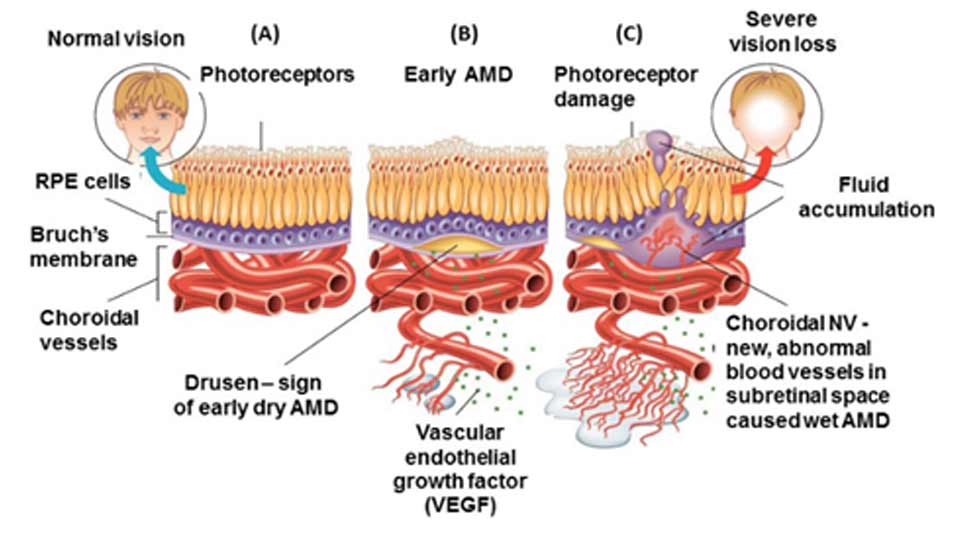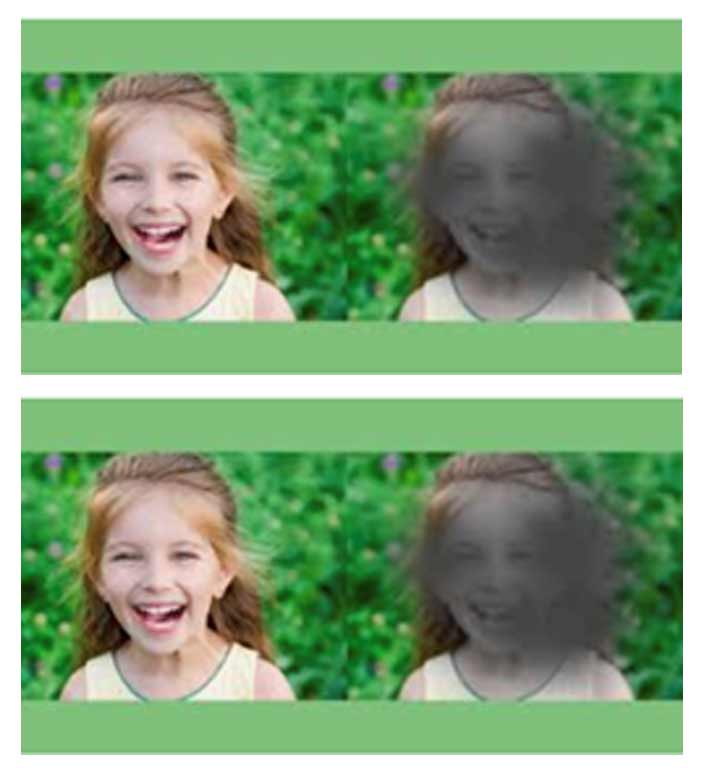Age-related macular degeneration (ARMD) is an ageing process of the retina and choroid.
These 2 layers are involved in light/ image processing. Retina and choroid are separated by a strong Retinal Pigment Epithelium (RPE) layer.
Retinal Pigment Epithelium (RPE)
The RPE is a ‘watertight’ structure that keep the retinal layer dry at all time.
Choroidal layer consists of leaky blood vessels. (fig 1)
With ageing, the RPE layer becomes weak and slowly loosing its watertight feature. When this happens, blood vessels from the choroidal layer will pass through the RPE to get into the retinal layer.
These abnormal vessels within the retina will bleed and distorts the retinal layer. (fig 1)

Figure 1: Illustration of age related macular degeneration. (Image from www.dreamstime.com
ARMD is more common among smokers.The most common symptoms are sudden blurring of vision (mainly in the center) or sometimes a patient will complain of distortion of the image.(fig 2)
Detail eye examination by an eye doctor will reveal the presence of blood under the retina in the affected eye. We can visualize the bleeding in more detail by doing a scan called OCT.
Optical Coherence Tomografi (OCT)
This is a biomicroscopic test. It is noninvasive. A simple method for the patient involves a sophisticated machine. OCT will be able to show the exact location and the extent of the disease.
 Figure 2: ARMD will affect the central vision. Without treatment, the dark area centrally will enlarge.
Figure 2: ARMD will affect the central vision. Without treatment, the dark area centrally will enlarge.
(Image from allaboutvision.com)
There are a few options of treatment. It can either be an injection into the eye (intra vitreal), laser or surgery. Treatment depends on the extent of the disease as well as the duration of bleeding.
If the patient presented at an early stage, injection of a special drug (antivegf) is the best treatment. The injection is needed monthly until the disease stabilizes. It is done under local anaesthesia with very minimal discomfort.
Laser can only be done if the location of the abnormal vessel is far from the center part of the retina. Whereas surgery is spared for those who have extensive bleeding.
Early Treatment
Early treatment increases the chances of visual recovery.
Therefore, the patient needs to seek medical attention early for any new symptoms (within days). Patient will experience recurrent episodes of bleeding.
Vision will continue to deteriorate and eventually becomes blind without treatment. Frequent or long duration of bleeding will cause scarring. Once there is scarring, the disease will not respond to any available treatment. Patient will be blind forever.
ARMD usually affects both eyes. Therefore, it is important to see your eye doctor early for any new symptoms.
Conclusion
In conclusion, ARMD causes blindness among elderly. Early detection and treatment save vision. Routine yearly eye screening is highly recommended after 50 years old.
Share this article to spread awareness about ARMD


